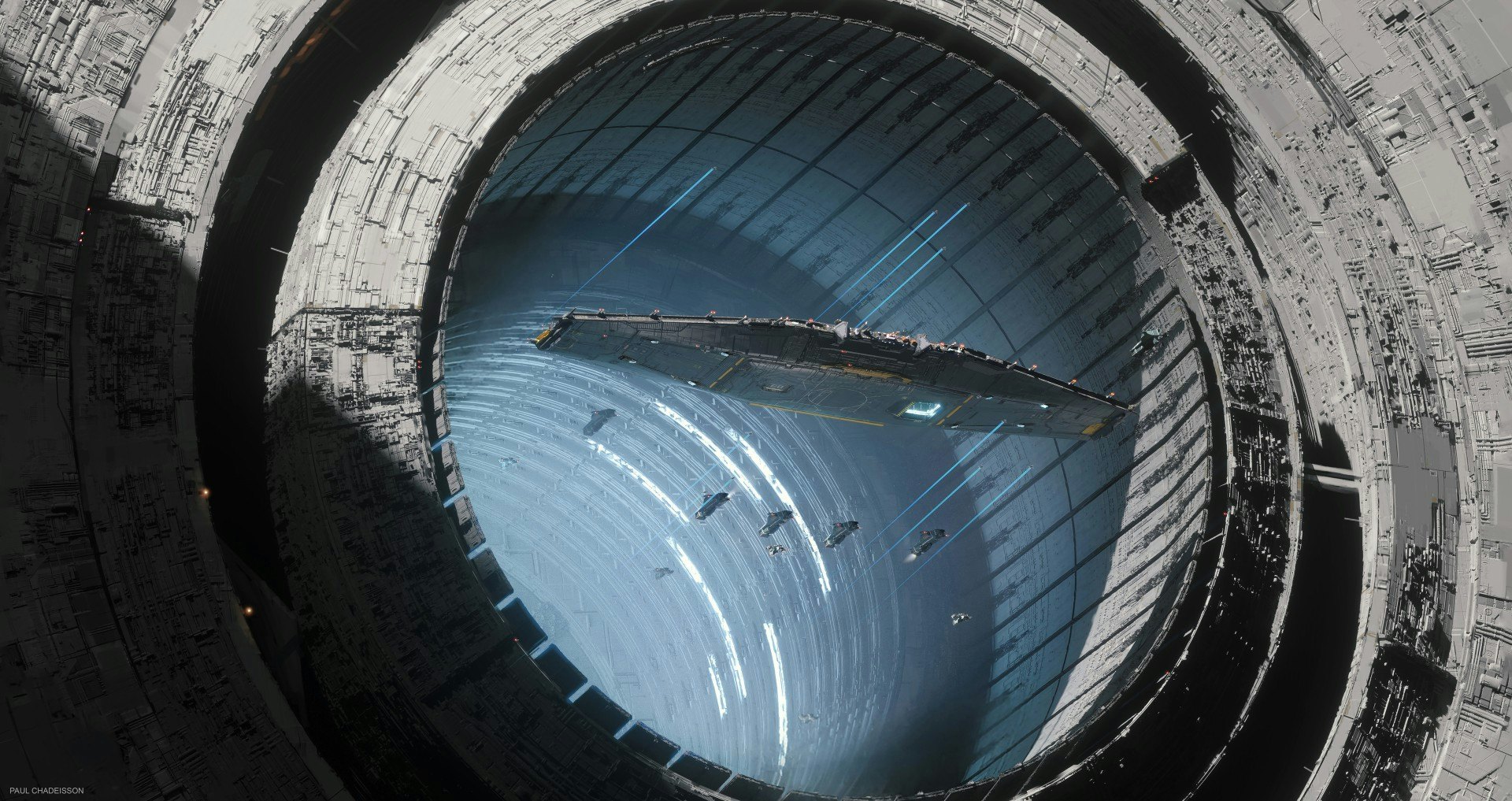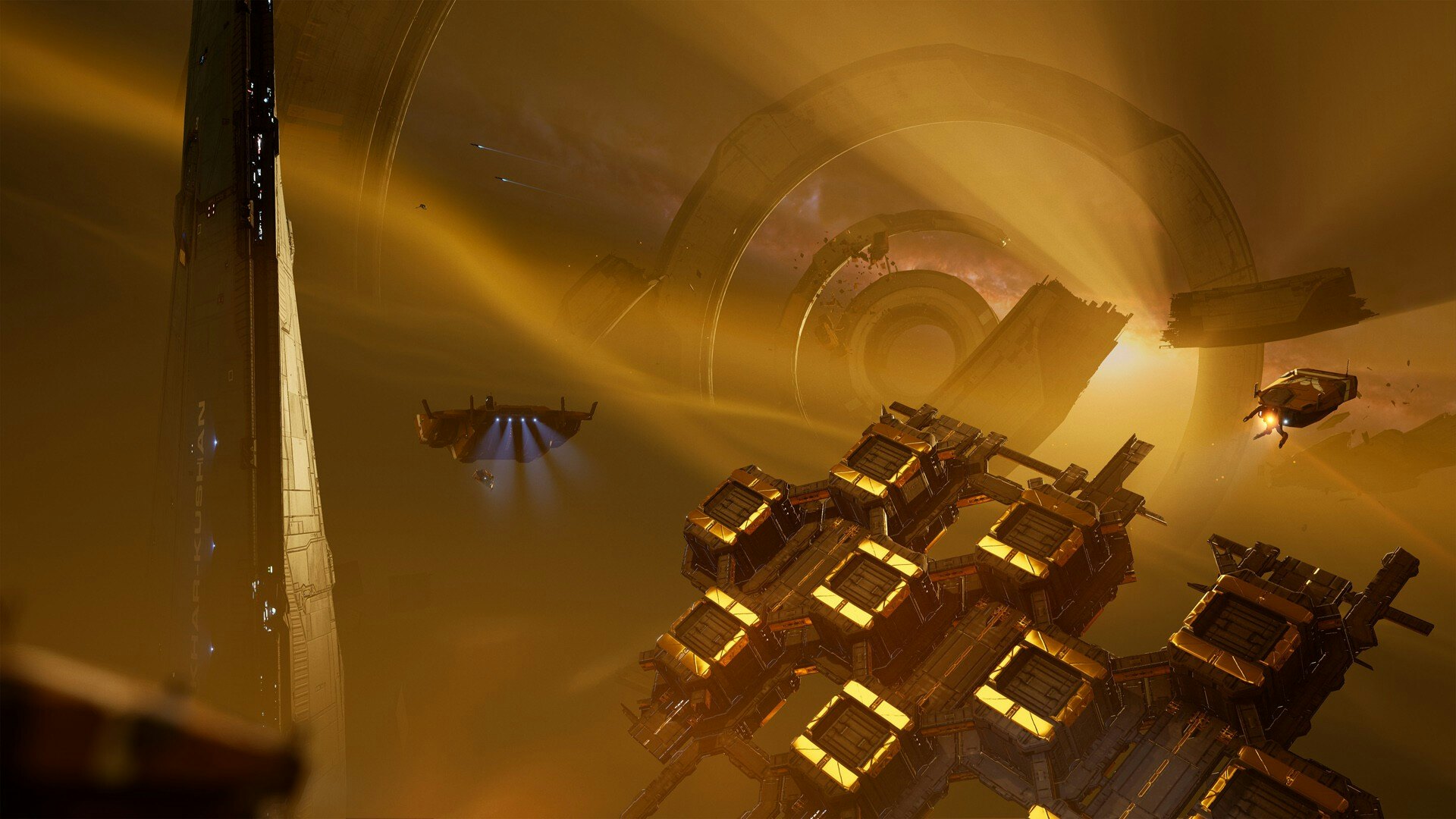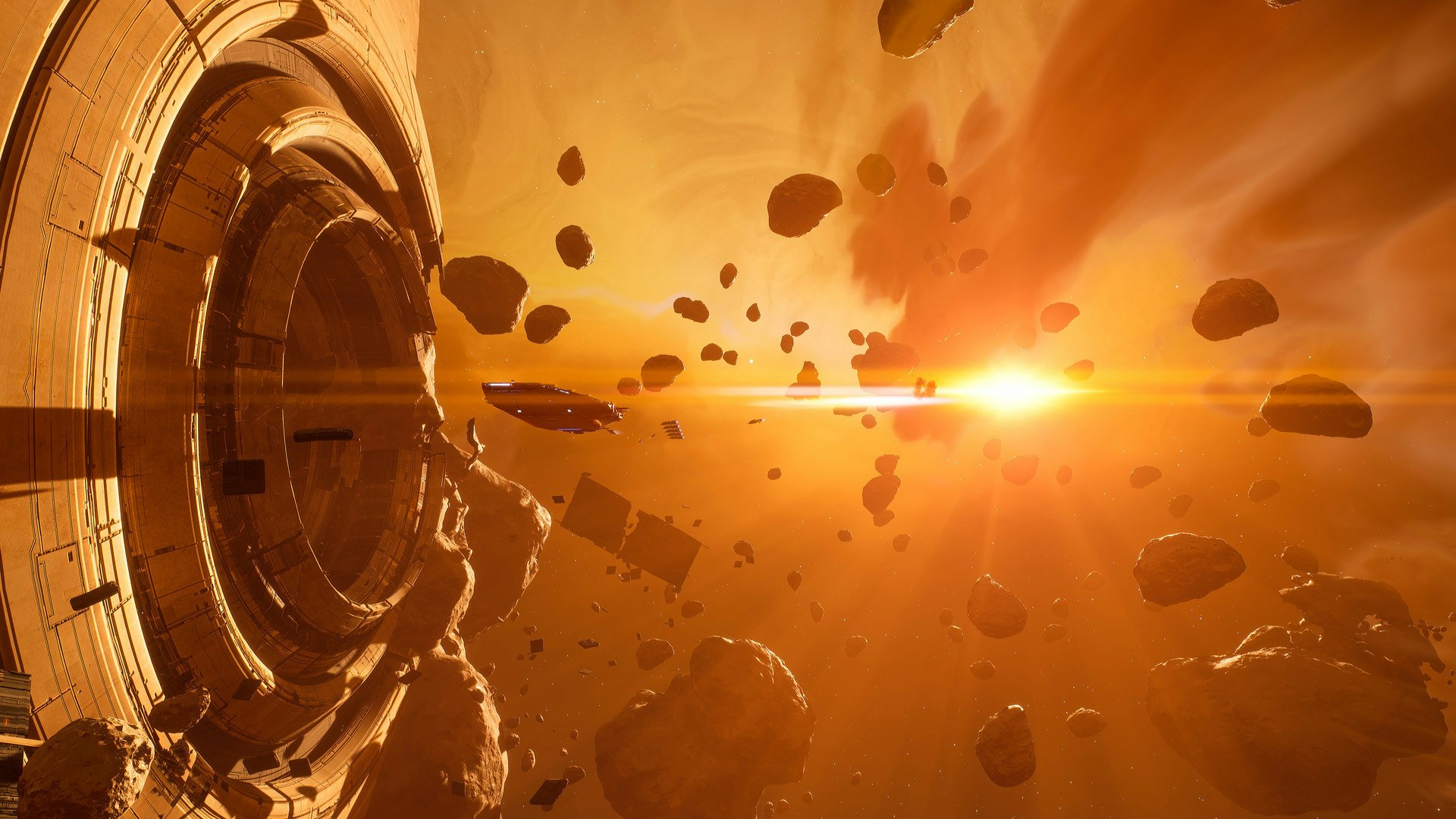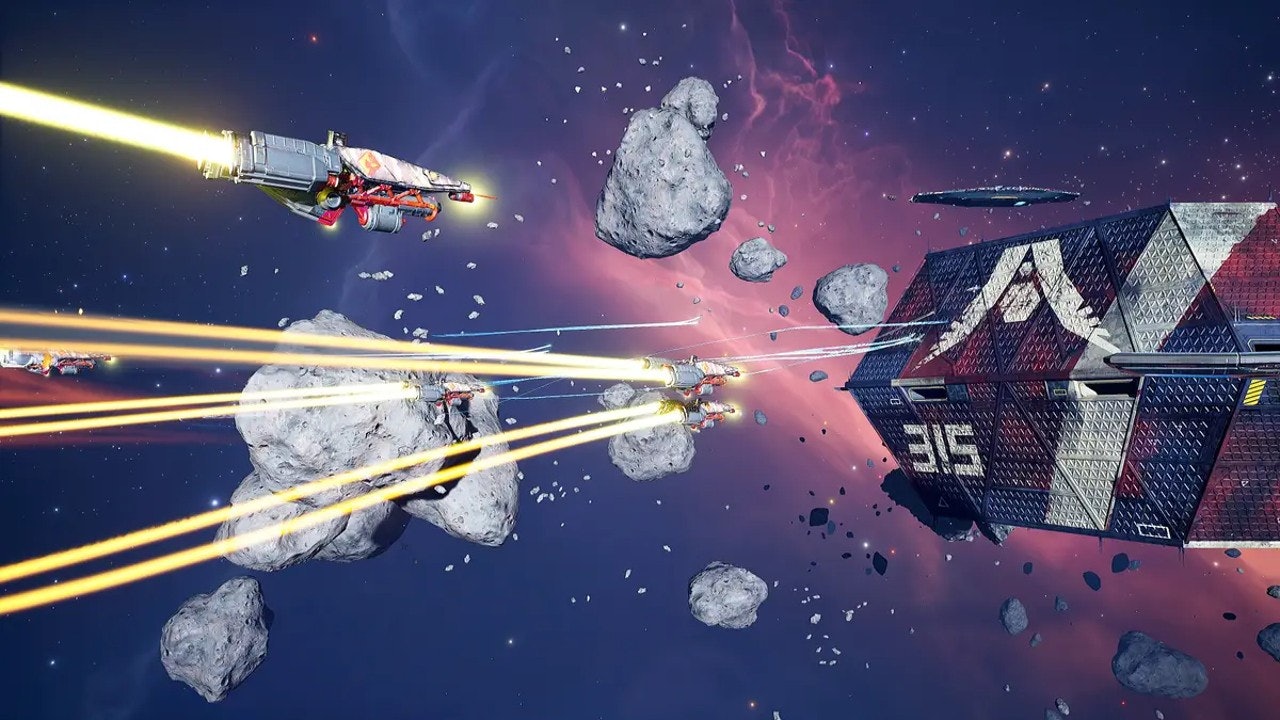
Homeworld 3 has been a labor of love for Blackbird Interactive, a painstakingly built real-time strategy game that has to honor the series’ legacy while also bringing it to a new generation. That’s no small task, but after announcing the game five years ago, the long-anticipated third entry in Homeworld is finally here.
What’s most interesting though is how the final product of Homeworld 3 is a result of a massive change at Blackbird, one that goes against a lot of the industry’s trends. At the beginning of 2022, midway through development, the studio transitioned to a four-day workweek.
“This game is better because we were able to take the time that we needed to get there,” Homeworld 3 director Lance Muller tells Inverse, “Having everybody on the dev team be able to have that three-day weekend, you just feel way more refreshed.”
Lead producer Iain Myers-Smith echoes that sentiment by saying the four-day work week is “a literal game-changer,” and it’s clear to see the shift paid off two years later.
It’s a stunning strategy game that manages to feel both nostalgic and modern. The team at Blackbird put a ton of thought and effort into making the game feel like a meaningful step forward, while providing something entirely new in the realm of real-time strategy.
Ahead of Homeworld 3’s launch, Inverse had the chance to talk to Mueller and Myers-Smith about the difficulties of creating a three-dimensional real-time strategy game, their commitment to a robust campaign, and the future of the RTS genre at large.
Note: This interview has been edited for clarity and brevity.

It’s been over a decade since the last mainline Homeworld game. Can you tell me about how you approached designing the modern control scheme, and updating these “classic” RTS experiences for a modern audience?
Mueller: When we first started working on the game, one of our main goals was to design a control scheme for a modern audience in 2024. And also, we do that for a three-dimensional RTS.
Homeworld 1 was very difficult for me when I was 14. After I finished learning how to use that control scheme, it was like I could use animation software, I could do modeling software, I could do all these things that normally take you a long time to learn. It was a very integral control scheme for that game, but also extremely difficult to ramp up into.
For Homeworld 3, we wanted to focus on “how do we get people into conventions that people expect out of a game in 2024. But also, how do we get you to understand three-dimensional space easier.” And that's where terrain comes in.
Now you've got these giant megaliths, you can just click on them, you can look around and see the megalith terrain and you can click on that. Then you’ve got tunnels you can move into. So for us, it was about how to make the most intuitive control scheme that integrates with terrain nicely, but also allows you to move through three-dimensional space with very little effort.
Tactical Response
One of the most interesting new aspects of Homeworld 3 is the cover system. Were there any issues with the way that ship AI would work with cover, and how hard was it to implement?
Mueller: It was difficult honestly. Three-dimensional terrain, three-dimensional pathfinding, and three-dimensional avoidance with terrain as part of that. These are technologies that only really came online in the last about six years, with drone technology, and their need to pathfind through buildings.
This is something that we leveraged early on. Our programmer, who worked on all the pathfinding, had to build a lot of this stuff based on early research papers around voxel-based, three-dimensional pathfinding.
On top of the voxel pathfinding system, we now have to understand avoiding and making sure we don't run into all these things. And then we also added cover nodes so that units know when and where cover is, based on the combat scenario that they're set in. They'll move in and out of that cover based on your stance. If they’re in an aggressive stance they’ll actually use less cover if not just ignore it entirely. So you can actually modify how the units interact with that system.
It was a cool challenge, and we were happy with how it ended up coming together. A lot of iteration, we did a first pass, and a second pass, and tried to squeeze out everything we could.

How did you approach mission design in the campaign? Did you want each mission to feel like a different task or a separate thing?
Mueller: 100%, it was a goal from the very beginning. Rob Cunningham, our CEO and creative director, was like “Guys, we need to try all these different things.” Then our Lead Campaign designer, Martin Blackmore, he's pushing all of that stuff too, like “We're going to do a defense mission, we need to really push that and really make sure we hone in on that defense.”
It was a huge goal for us, we planned out every single beat for each mission of, this is a defense mission, this is going to be a quick runandgun, you've only got a certain amount of time to make this happen. Then making sure that the variety in each mission from gameplay perspective, but also from a visual perspective, creates the two dichotomies of variety there. It allows the player to feel like they're going through something different each time.
To highlight that point, could you tell me about Mission 06 specifically, the asteroid mission? It feels like a massive change of pace, as you’re dodging asteroids. How did you approach making sure that mission was challenging, but not too difficult?
Mueller: It’s an homage to Homeworld 1’s asteroid mission, with a little bit of a twist. Instead of it coming straight at you, you get to play a bit of a side game with the asteroids. That one was tough, we balanced it a lot.
In the end, we focused on making sure that the mission wasn't too challenging, we wanted to make sure that it was a bit of a downbeat. There is some randomness to it, because the asteroids and how you interact with them can create different scenarios. You can get very aggressive with them if you want, but for me, I love navigating the mothership. So I get right in there, and start diving underneath an asteroid and try to pull up on the other side of another one. The high-level goal there was to give you the fantasy of naval space and naval navigation.

Where did the idea for the roguelike mode WarGames come from? And how many iterations did you have to go through before it felt right?
Mueller: We were looking at a lot of different roguelikes that were coming out at the time, like Risk of Rain is a great example of this. We were looking at what is the right cooperative game experience for a Homeworld game.
Roguelike modes work well with Homeworld, with the persistence that already exists. You have a fleet, you fight, you get resources, you get cool stuff, which makes you even cooler. Then you hyperspace to another mission. All the mechanics of Homeworld coalesce and are nicely connected with the same systems from a roguelike.
Myers-Smith: There's so much player choice already integrated into an RTS game like Homeworld. Macro decisions, resourcing decisions, fleet composition decisions, that all play really well into the roguelike nature of the WarGames mode, making player choice really matter. Then building upon that with the roguelike elements like artifacts.
It allows us to give players a unique experience that we can also build upon by adding content, pulling things in from the DLC roadmap, adding those to the game as we go. So that experience grows over time, and becomes more interesting over time. You have more fleets to choose from, which gives you new strategies to try out as the artifact pull expands your choices and becomes even more meaningful. And you won't always have the opportunity to play with your favorite set of artifacts, you'll be challenged to try new ones.
Facing the Future

Previously, you've talked about how you switch to a four-day work week during development. Can you provide a little insight on how that changed the development of this game, or what it's allowed you to do?
Myers-Smith: I can only speak to my individual experiences when I talk about my personal feelings about the four-day workweek. But I love it, it is a literal game-changer. If everyone got an opportunity to try a four-day workweek, and then were sent back to a five-day workweek, there would be riots in the street.
It allows for a degree of work-life balance and mental health that is advantageous. And from a dedication and work perspective, it allows me to recharge on the weekend, and come back on Monday, full bore to not just do my job, but do my job with love, passion, and dedication.
From a project level, we've noticed huge benefits from the four-day workweek. People come in on Mondays ready to work, there's none of that sort of Monday blues, none of that lag of jumping into the week where the first half of Monday is people struggling to shake off their weekend and drinking coffee.
“We're on the cusp of a potential RTS Renaissance.”
It allows people the time to think and process over the weekend and come up with creative ideas. It's like the shower effect. If you're trying to solve a problem, and you're just hitting your head against it repeatedly, you don't necessarily come up with a solution. But then when you're, in the shower, in the morning or the evening, the epiphany comes to you and that's the solution. It enables those types of moments a lot, and allows for a spark of creativity. If you're just grinding nine to five, five days a week, you don't have that same opportunity.

The RTS genre as a whole is in an interesting place right now. Where do you think the genre goes from here? How does it maintain relevance, and attract new players?
Mueller: Right now in the RTS genre, you see a lot of people trying different things to see what is that next thing. We're seeing some cool stuff from a lot of different studios. For us, we're trying out some cool stuff with WarGames, we're going to see how that lands, and as we go with a live development on that, we're going to be able to read what players want out of that mode. What is it doing right, what isn't it doing right? From that learning, we'll see where that goes from there. But everybody's gonna be looking at us. Everybody's gonna be looking at everybody else and seeing what is landing with players. It’s just great to see that innovation happening in this genre.
Myers-Smith: We're on the cusp of a potential RTS Renaissance. There's a bunch of really high-profile RTS on the horizon, and it'll be interesting to see where each developer takes the genre.
Based on how people resonate with the different takes, we will hopefully see future development in the space and continued growth of the RTS.
It's a bit of a tricky one, because a lot of the old-school RTS players are aging and don't necessarily have the APM (actions per minute) to keep up with the competitive multiplayer players. Maybe I'm outing myself a bit here, and my slowing APM, but there's probably going to be continued movement towards co-op experiences over competitive multiplayer experiences.
Starcraft 2 proved how popular co-op experiences are within RTS. That’s the direction the RTS will be pushed in, and we'll see some neat and novel things in the near future. Hopefully, WarGames can be part of that vanguard. But that said, there's a huge group of people out there who just want a solid, awesome campaign story experience. They want to be able to boot up the game, play an awesome single-player story, and dive deep into the cool sci-fi or fantasy world.
Homeworld 3 is available on PC.







